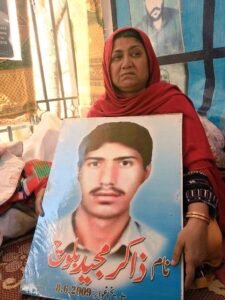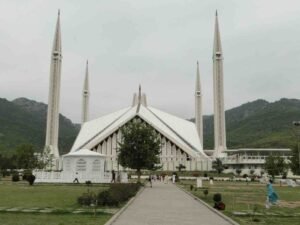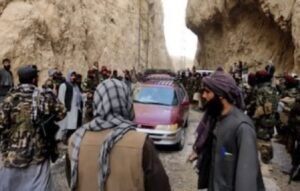Pakistan’s Security Crisis: A Decade of Decline

Photo by @Gulistan for ADN
By Kadeem Baloch
The past decade has witnessed a deteriorating security situation in Pakistan, characterized by a resurgence of militant violence, political instability, and economic challenges. Despite vows to combat terrorism effectively following the tragic Army Public School attack in 2014, the government and military have failed to deliver on their promises. Instead, mismanagement, short-sighted strategies, and the promotion of radicalization for self-interest have allowed militancy to flourish, leaving the country in a precarious state.
The resurgence of terrorism in Pakistan is most evident in the alarming frequency and intensity of attacks, particularly in Khyber Pakhtunkhwa (KP) and Balochistan. These regions have become epicenters of militant activity, with targeted killings, suicide bombings, and assaults on security installations becoming daily occurrences.
According to the Pakistan Institute of Conflict and Security Studies (PICSS), there were 856 attacks in 2024 alone, resulting in the deaths of 476 security personnel. Such figures highlight the scale of the crisis, exacerbated by the failure of law enforcement agencies to counter these threats effectively.
Militant groups, particularly those operating under the banner of banned organizations, have grown more organized and better equipped. Their reach now extends beyond traditional strongholds in North and South Waziristan to central KP and even urban centers. Reports of militants engaging in gun battles with security forces and taking officers hostage underscore their impunity and the weakened state of Pakistan’s counterterrorism (CT) capabilities.
A significant factor in the rise of terrorism is the absence of a coherent and effective CT strategy. Successive governments and the military have relied on short-term kinetic operations without addressing the underlying causes of extremism. This reactive approach has allowed militant groups to regroup and expand their influence. For instance, the decision to engage in peace talks with the Tehreek-e-Taliban Pakistan (TTP) in 2021 has proved disastrous. The negotiations led to the release of hard-core militants and the return of thousands of armed fighters to Pakistan, many of whom resumed their violent activities. The collapse of the talks and the subsequent escalation in attacks underscore the flawed nature of these engagements.
Furthermore, the leadership has failed to address the socio-economic grievances of local communities in conflict-hit regions. The neglect of development, lack of basic services, and heavy-handed military operations have alienated the populace, creating a trust deficit. This divide has been exploited by militants, who present themselves as protectors of local interests against an uncaring state. The absence of meaningful dialogue and community engagement has perpetuated a cycle of violence and resentment.
Another critical dimension of Pakistan’s security crisis is the unchecked growth of radicalization. Madrassas, many of which operate outside government regulation, continue to promote extremist ideologies. These institutions have become breeding grounds for militancy, with little effort made to reform or monitor their activities. The government’s failure to address this issue has not only sustained the flow of recruits to militant organizations but also deepened sectarian divides.
Sectarian violence, particularly in regions like Kurram and Orakzai, has added a new layer of complexity to the security landscape. The nexus between certain elements in Pakistani Army and sectarianism has given rise to more lethal forms of militancy. The tacit support received from certain sections of the Pakistani Army has emboldened these groups, providing them with sanctuaries and logistical support. The inability of the state to curb these influences has left communities vulnerable to repeated cycles of violence.
While external factors, such as the Taliban’s resurgence in Afghanistan, have contributed to the escalation of militancy, the primary responsibility lies with Pakistan’s leadership. The porous borders on the Afghan side have facilitated the movement of militants and illicit financial flows, but it is the lack of robust border management and intelligence coordination that has exacerbated the problem. The government’s focus on partisan politics and crackdowns on opposition has further distracted it from addressing these critical security issues.
Moreover, the economic instability in Pakistan has compounded the security crisis. A struggling economy has limited the resources available for CT operations and development projects in conflict-affected areas. The resulting socio-economic hardships have made communities more susceptible to militant propaganda, fueling recruitment and support for extremist groups.
The worsening security situation demands a fundamental shift in strategy. Relying solely on military operations is insufficient; a holistic approach is needed to address the root causes of militancy. Pakistan’s leadership must recognize that addressing the security crisis requires commitment to long-term reforms and genuine engagement with affected communities. Without such efforts, the country risks further destabilization, with dire consequences for its future.
The author chooses a pseudonym. Kadeem Baloch is a freelance journalist based in Pakistan.
Note: The contents of the article are of sole responsibility of the author. Afghan Diaspora Network will not be responsible for any inaccurate or incorrect statement in the articles.











